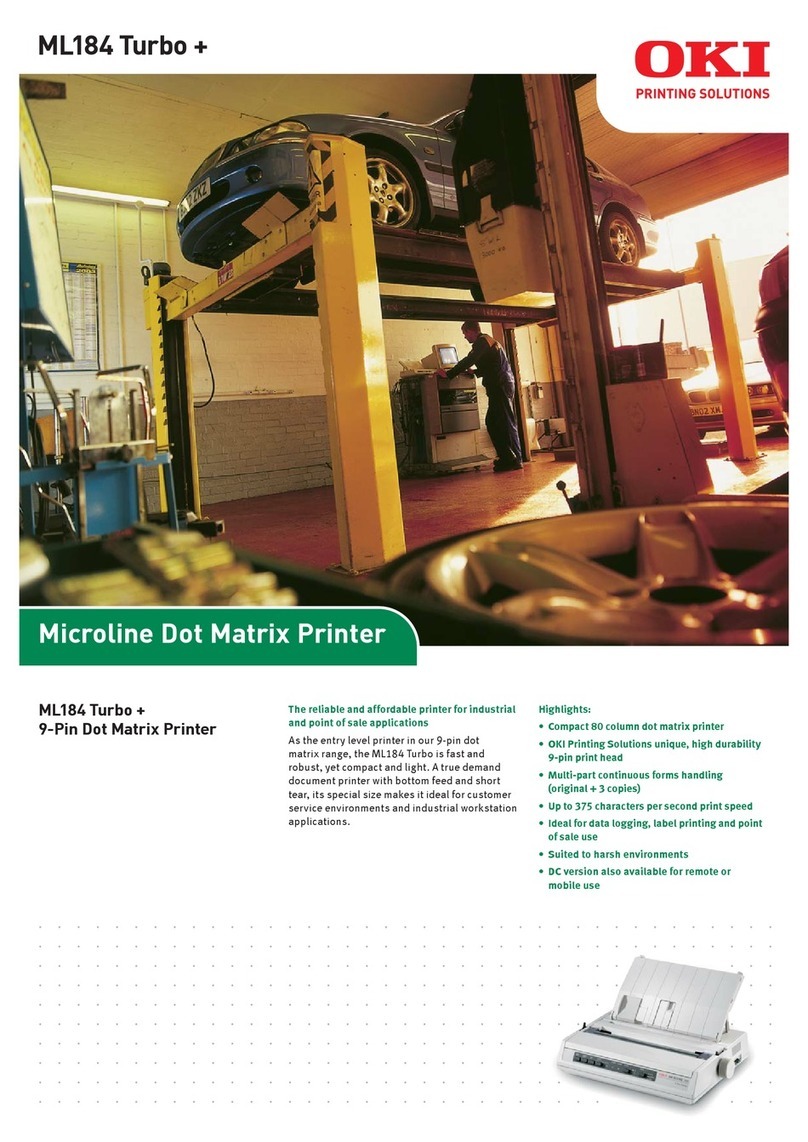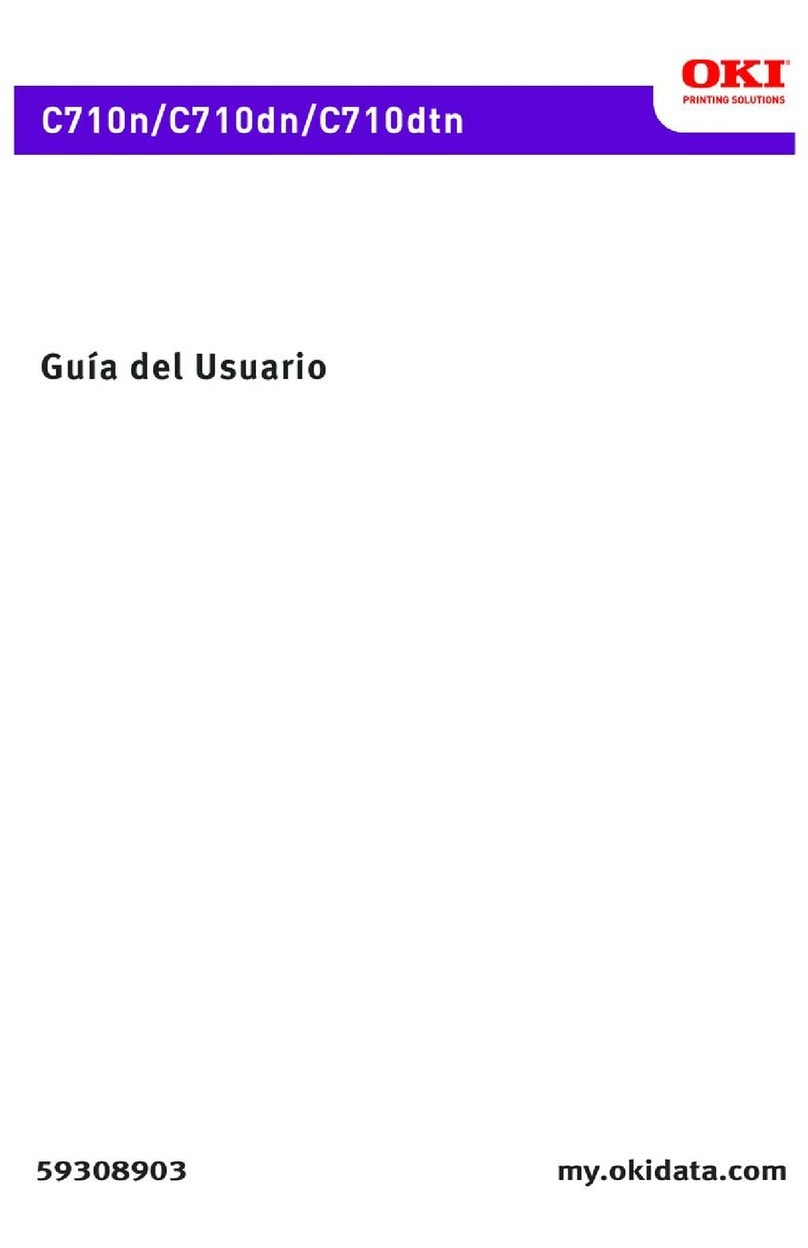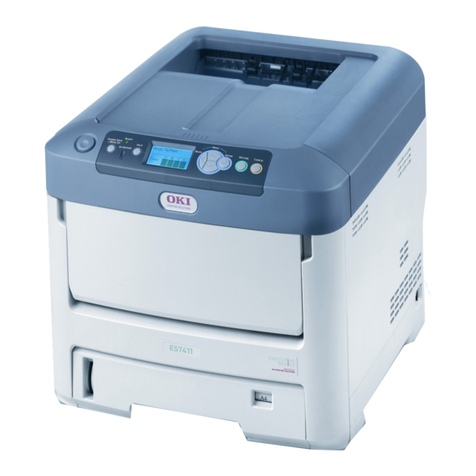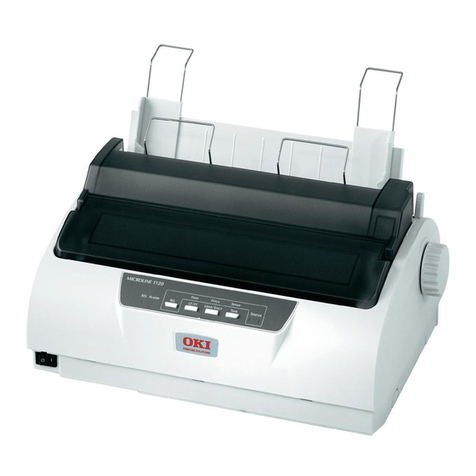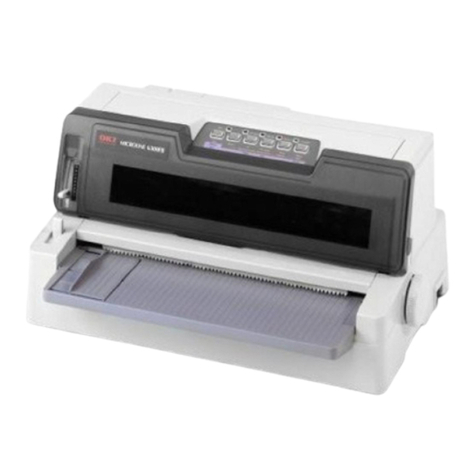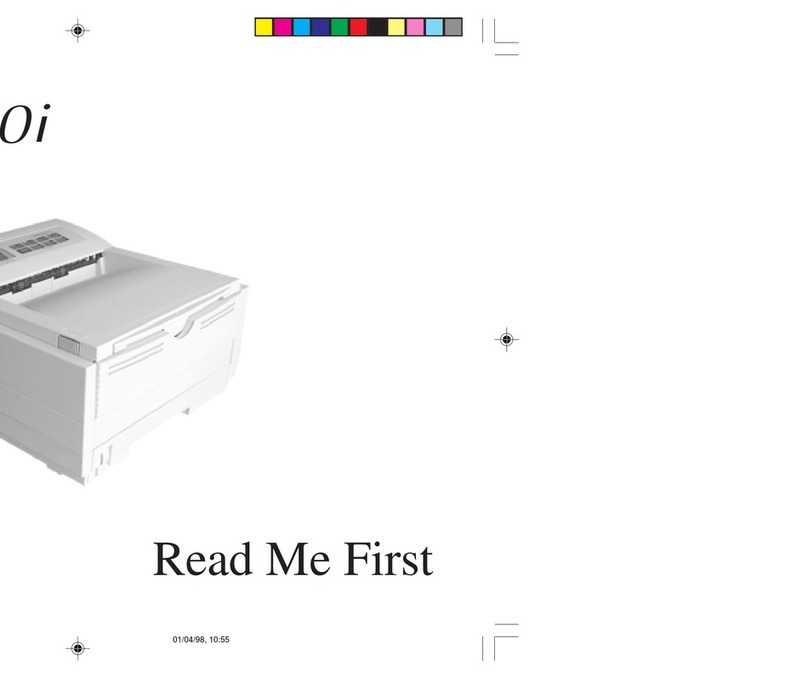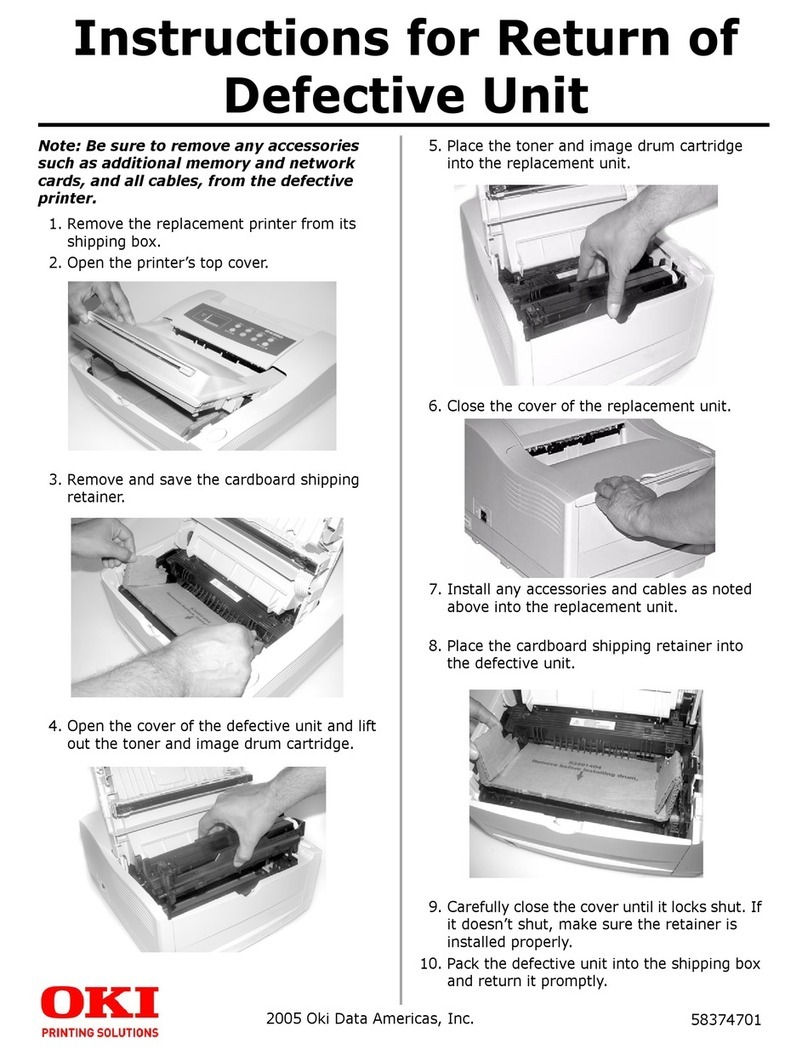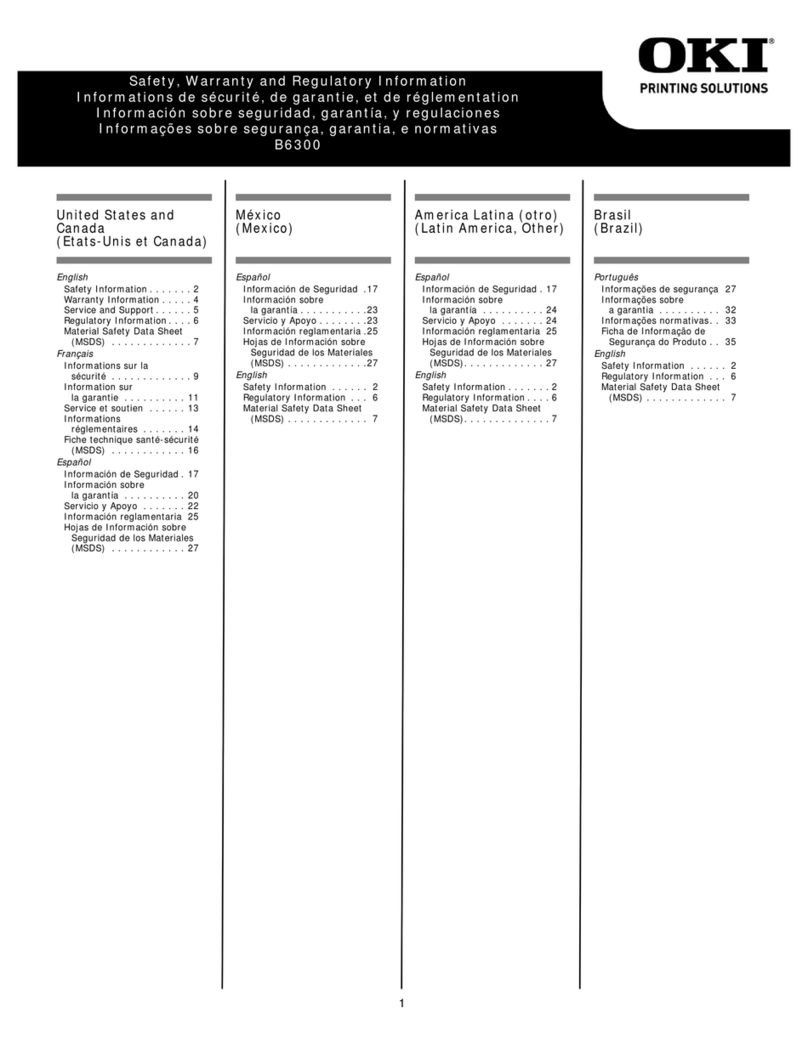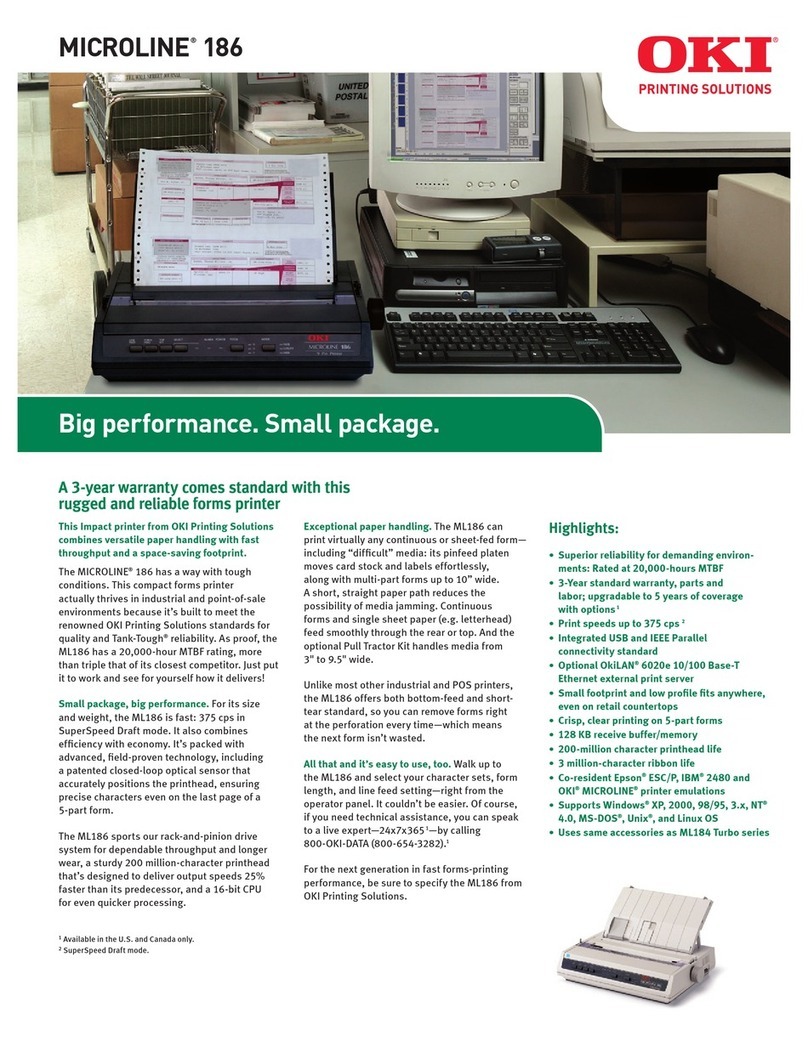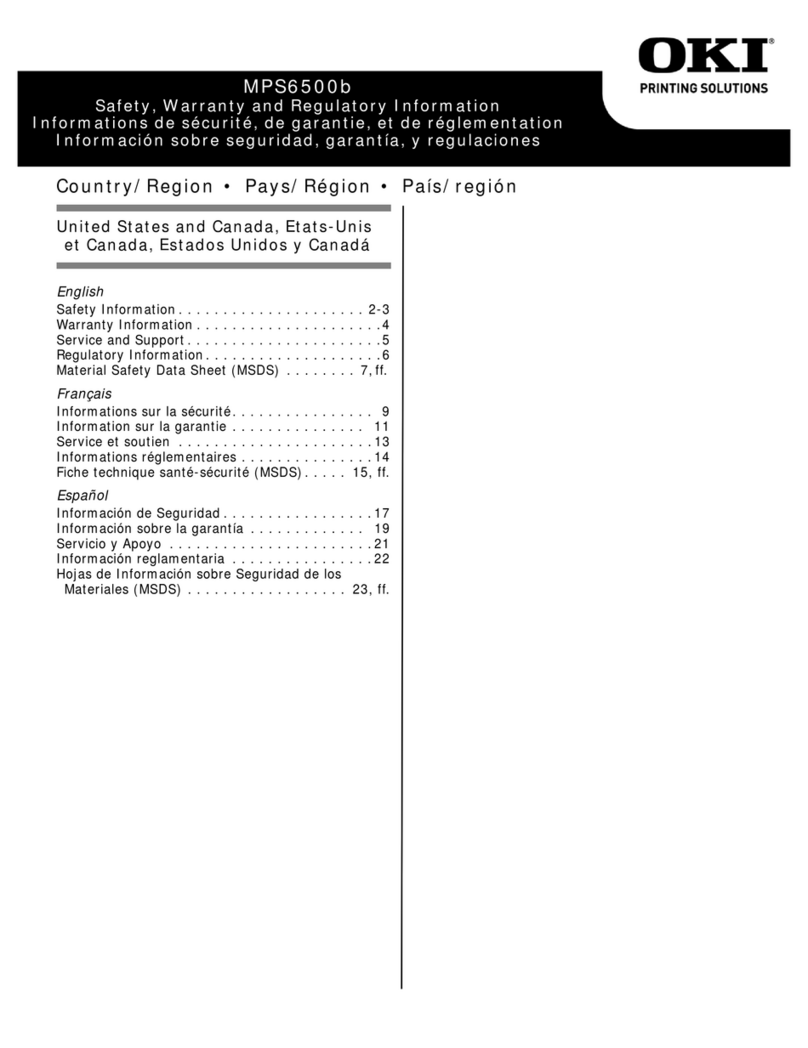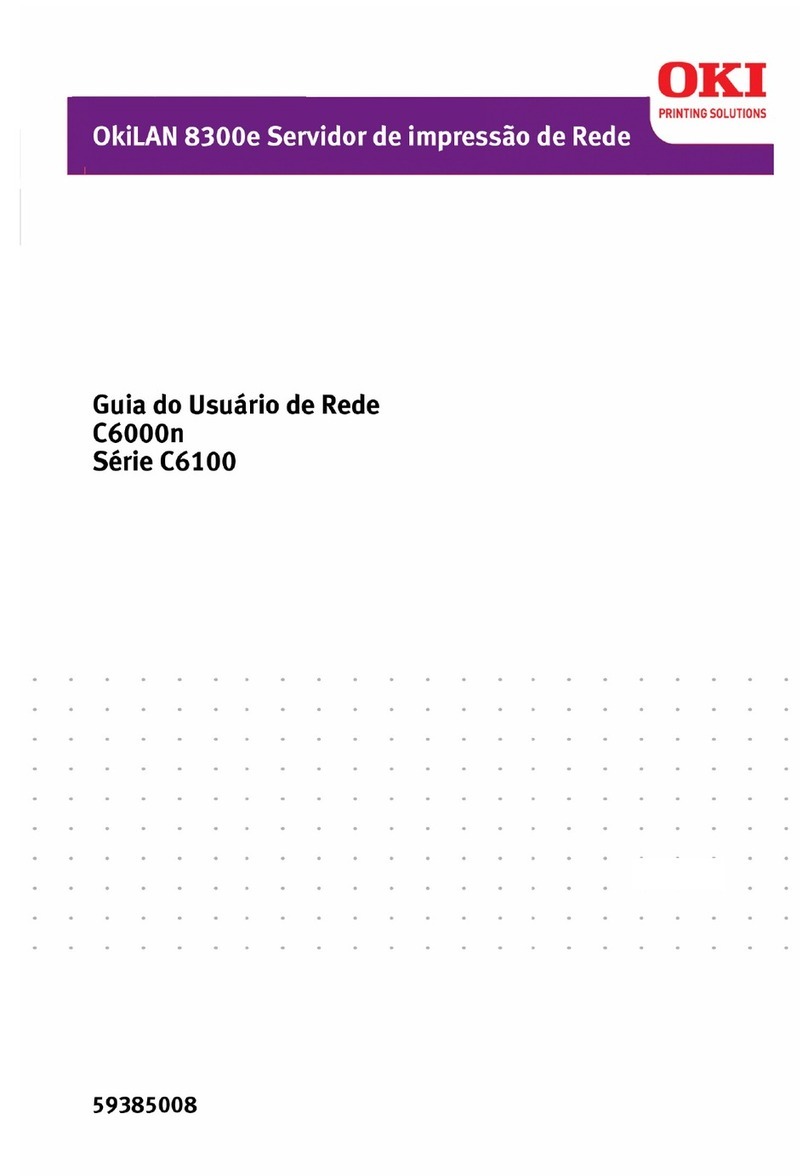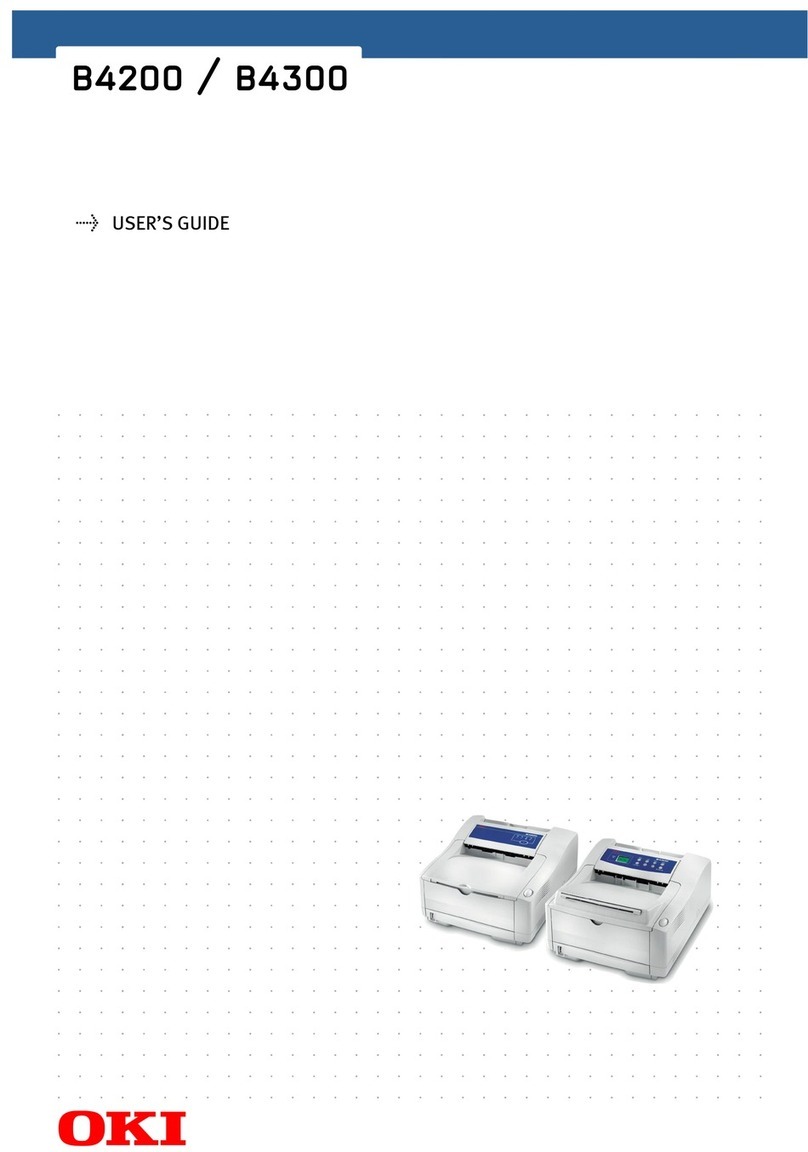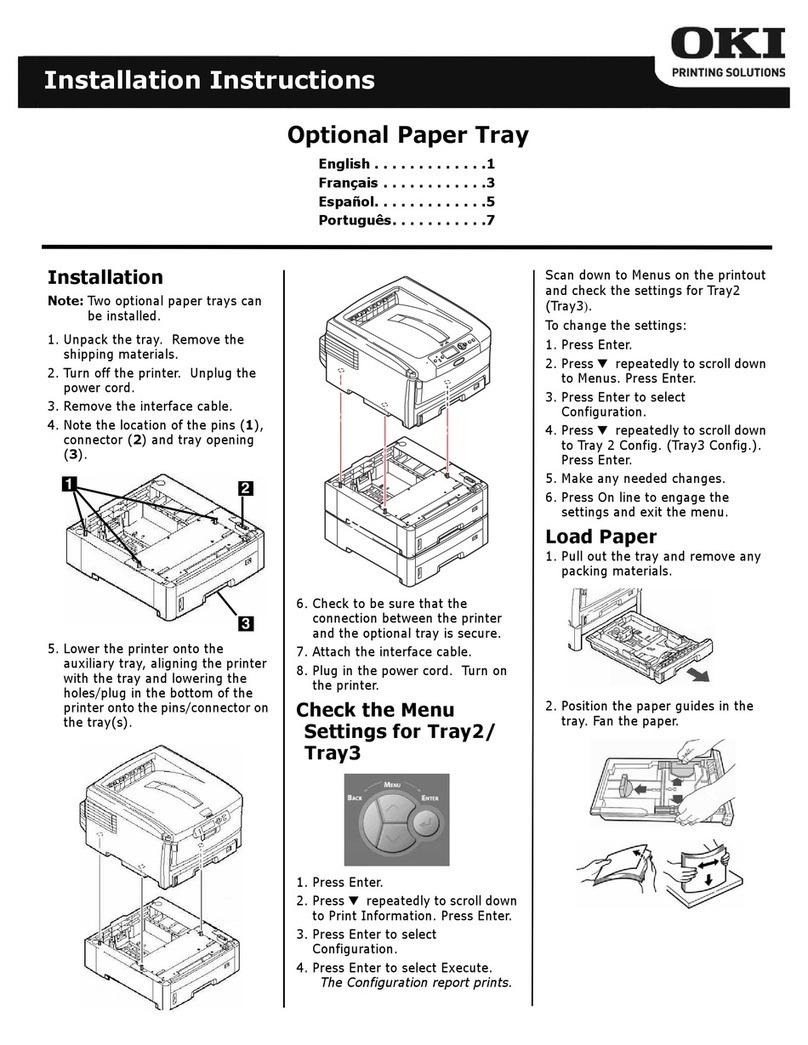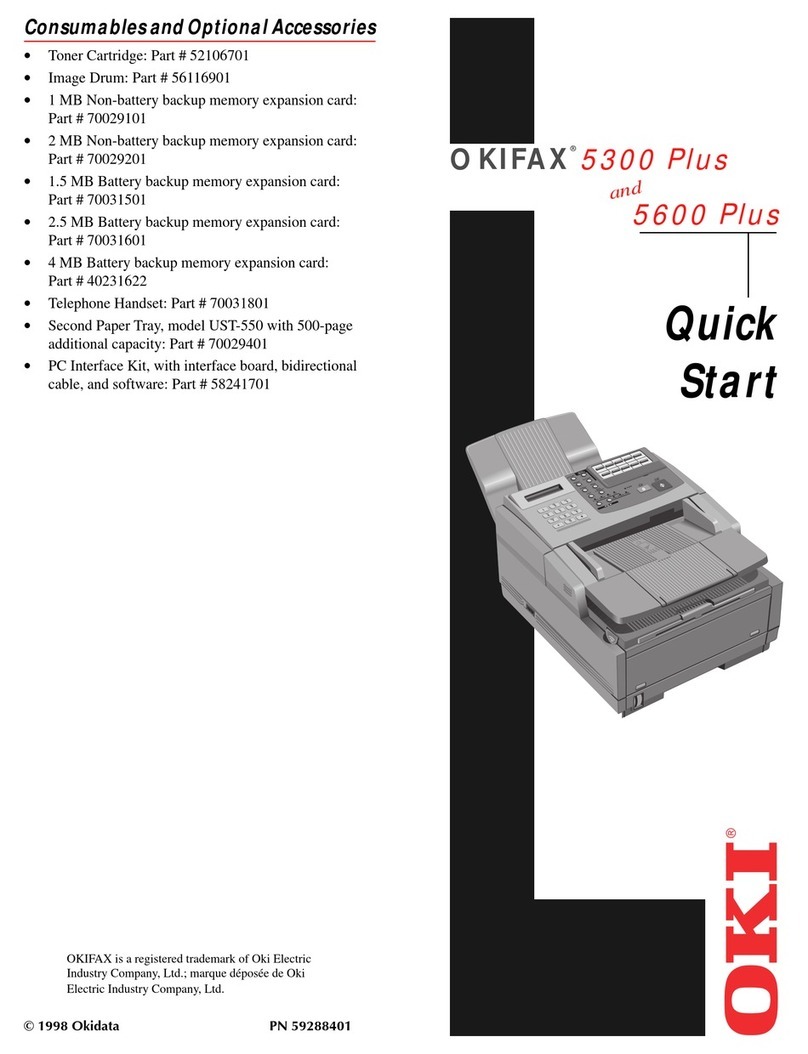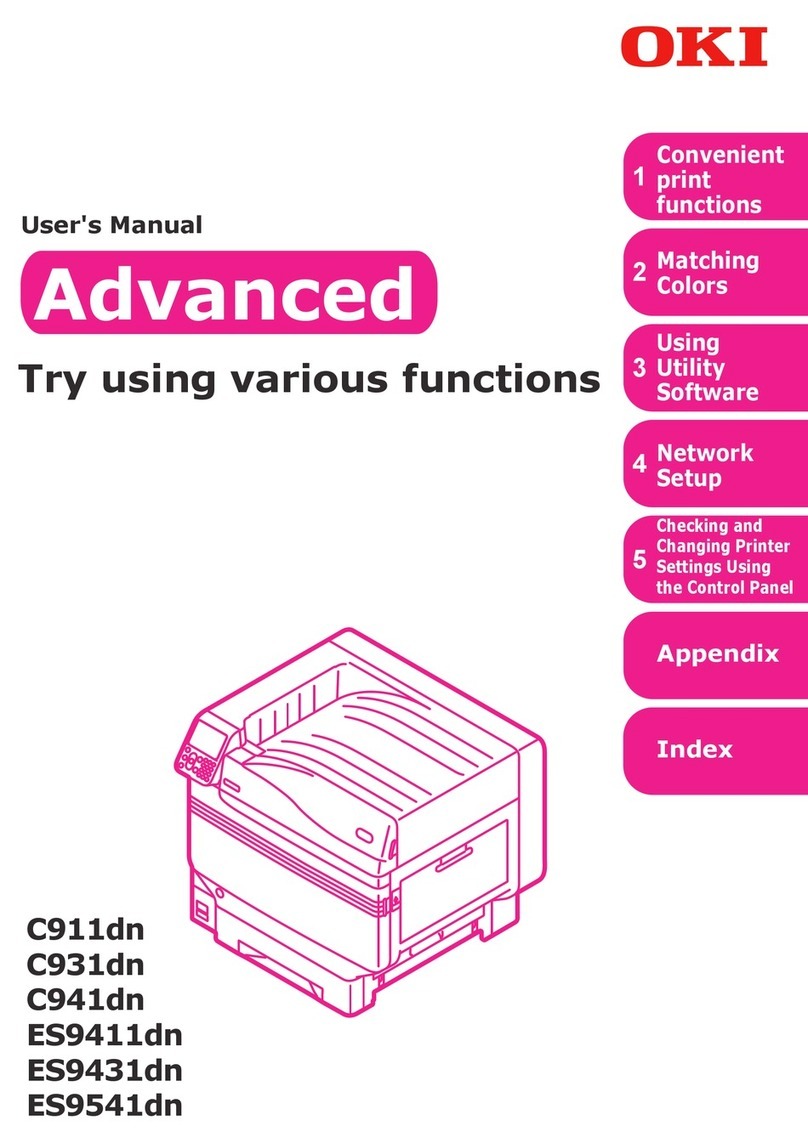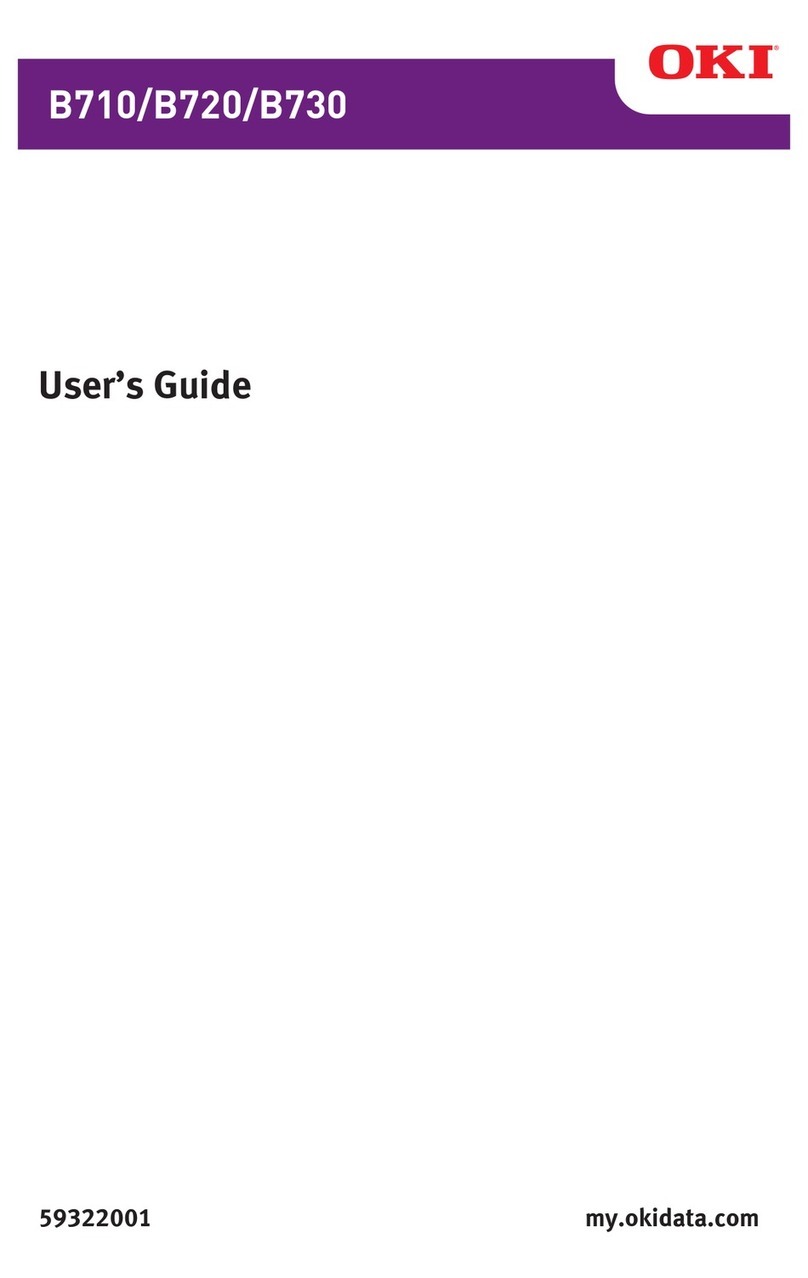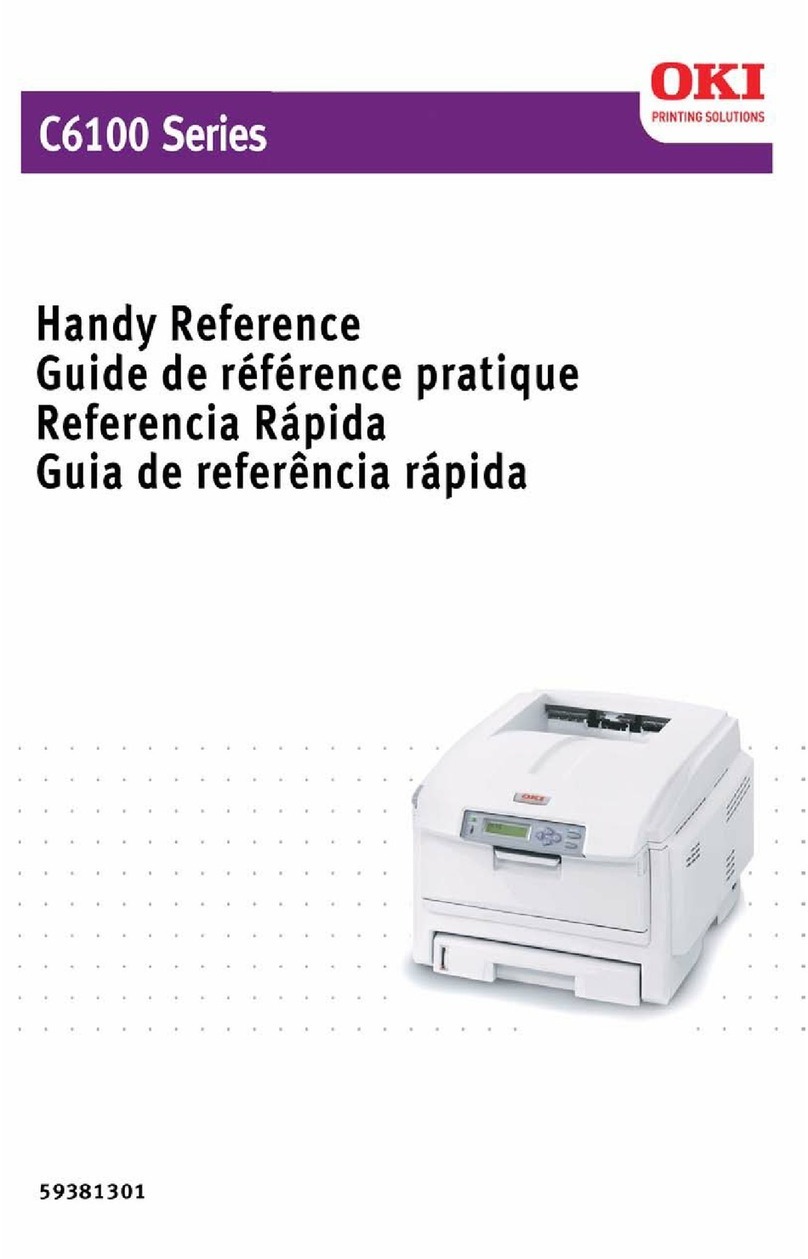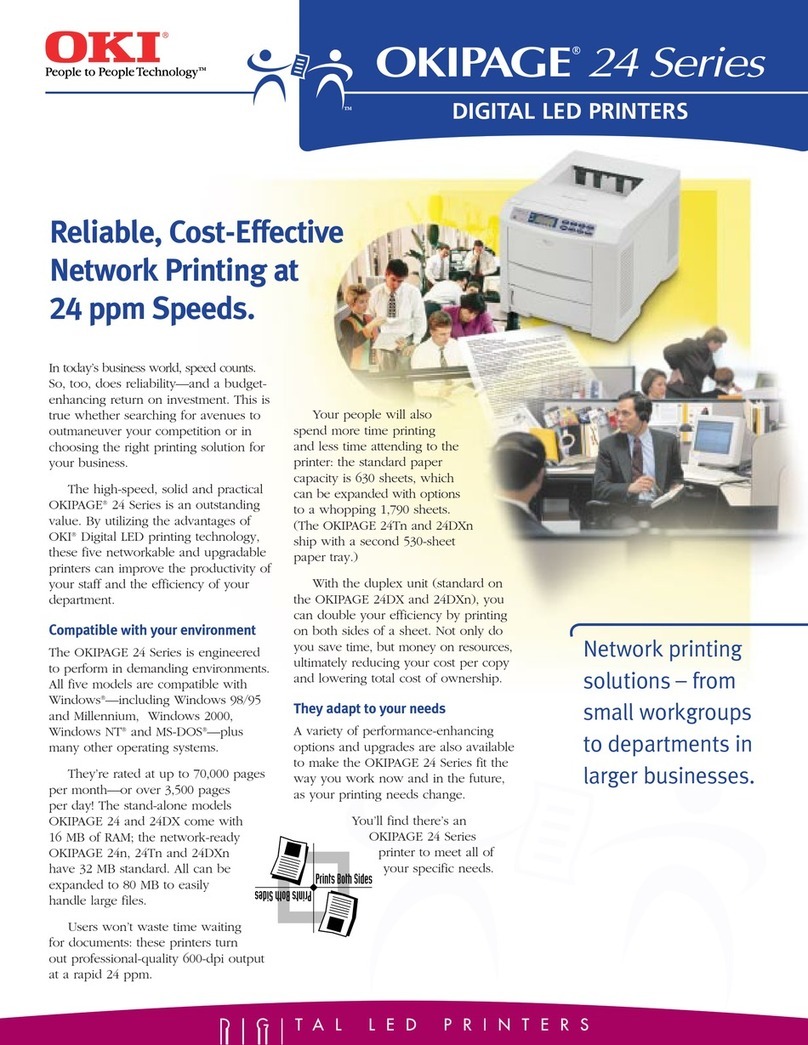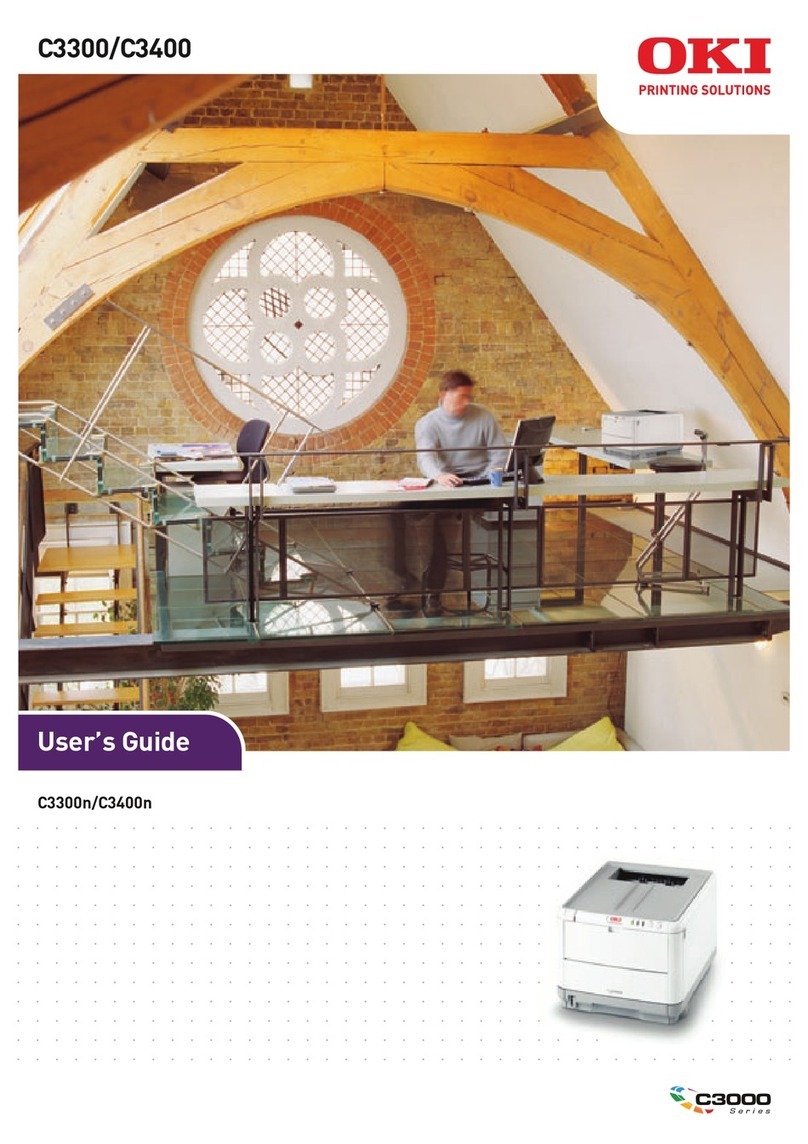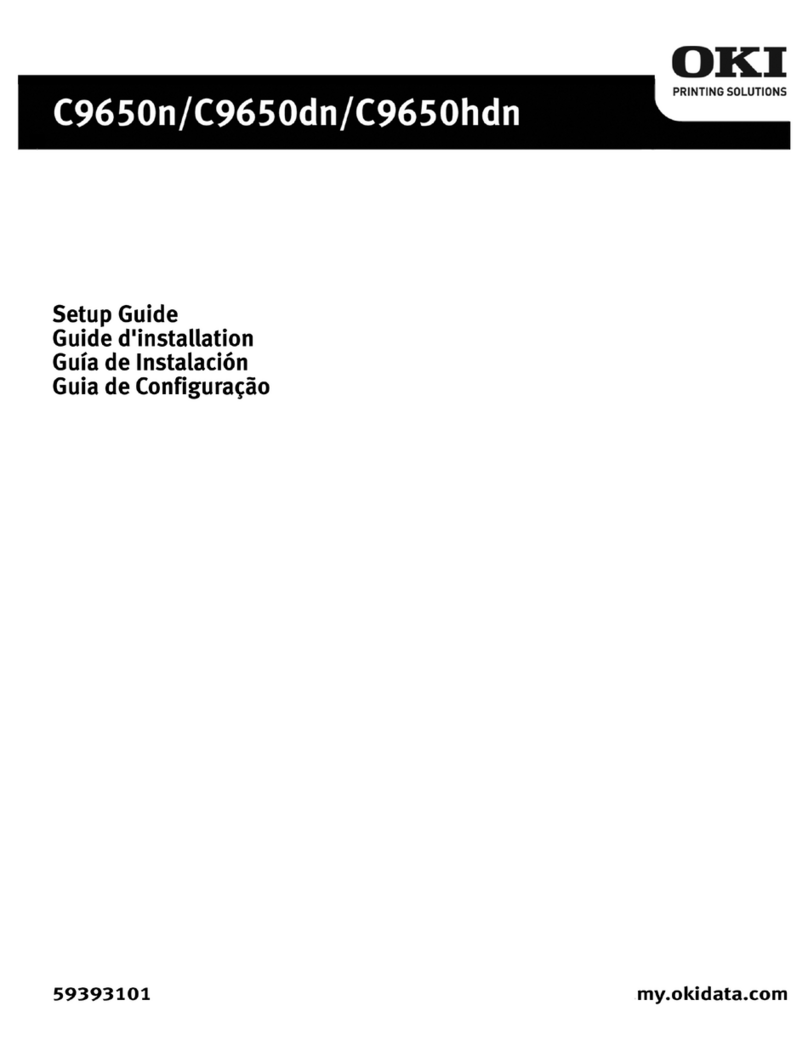
NO WARRANTIES WHETHER EXPRESS OR IMPLIED,
INCLUDING, BUT NOT LIMITED TO, ANY IMPLIED
WARRANTIES OF MERCHANTABILITY OR FITNESS FOR
A PARTICULAR PURPOSE, SHALL EXTEND BEYOND
THE RESPECTIVE WARRANTY PERIOD DESCRIBED
ABOVE. Some states do not allow limitations on how long an
implied warranty lasts, so the above limitation may not apply to
you.
OKI DATA SHALL NOT BE RESPONSIBLE OR LIABLE
FOR ANY SPECIAL, INCIDENTALOR CONSEQUENTIAL
DAMAGES OR LOSS ARISING FROM THE USE OF THIS
PRODUCT. Some states do not allow the exclusion or
limitation of incidental or consequential damages, so the above
exclusion may not apply to you.
Additional information on obtaining service under this Limited
Warranty is available by contacting the Oki Data dealer from
whom the product was purchased, by contacting Oki Data
directly at 1-800-OKI-DATA (U.S. and Canada, English only) or
at 1-856-222-7496 (Spanish only), or by contacting one of the
service locations listed below.
Oki Data Service Center Information
UNITED STATES CANADA
Oki Data Americas, Inc. Oki Data Americas, Inc.
2020 Bishops Gate Blvd. 2735 Matheson Blvd. East, Unit 1
Mt. Laurel, NJ 08054 Mississauga, Ontario
Canada L4W 4MB
Tel: 1-800-654-3282 Tel: 1-800-654-3282
Fax: 1-856-222-5247 Fax: 1-905-238-4427
MEXICO
Oki Data de Mexico, S.A. de C.V.
Mariano Escobedo No. 748 - 8 Piso
Col Anzures, e.p. 11590, Mexico, DF
Tel: (525) 263-8780 Fax: (525) 263-8785
BRAZIL
Oki Data do Brasil, Ltda.
Rua Alexandre Dumas, 2220 - 8 andar
Chácara Sto Antonio
São Paulo 04717-004, Brasil
Tel: 5511-3444-3500 Fax: 5511-3444-3501
This Limited Warranty applies to this printer. However, the
procedure for obtaining service may vary outside the continental
United States. Contact your Oki Data dealer for such warranty
service information.
This warranty gives you specific legal rights, and you may also
have other rights which vary from state to state.
Limited Warranty
United States & Canada
Oki Data Americas, Inc. (Oki Data) warrants this printer to be
free from defects in material and workmanship and will remedy
any such defect according to the terms of this Limited Warranty.
Oki Data will repair (or at its option, replace) at no charge, any
defective component(s) of the Printer for one (1) year from the
date of purchase except for the printhead (LED imaging array),
which is warranted for a period of five (5) years from date of
purchase. This Limited Warranty extends to the original
purchaser only. This Limited Warranty does not extend to
consumable items.
On-Site Repair
!On-Site Repair is available in the United States and
Canada only. On-Site Repair does not include the
replacement or repair of product consumables or
supplies.
Oki Data will, for a period of one (1) year from the date of
original purchase, repair or replace (at Oki Data’s option)
on-site at the original purchaser’s facility and without
charge, any defective component(s) of the printer,
provided that the warranty service is performed by an Oki
Data authorized service provider. The printheads (LED
imaging arrays) have a 5-year parts only warranty from
date of original purchase. Following the first year of
warranty coverage, the printheads will be replaced by an
authorized Oki Data service provider at Oki Data’s then
current labor rates. Oki Data reserves the right to use new
and/or refurbished parts in the warranty repair process.
To make request or claim for service under this Limited
Warranty contact your local Oki Data authorized service center
or Oki Data at 1-800-OKI-DATA (1-800-654-3282).
A written receipt for the product, showing the date of purchase,
dealer’s name, and both the model and serial numbers of this
printer must accompany any request or claim for work to be
performed under this Limited Warranty.
This Limited Warranty shall not apply if the product has been
damaged due to abuse, misuse, misapplication, accident, or as a
result of service or modification by any other than an authorized
Oki Data service center.
THERE ARE NO EXPRESS WARRANTIES OTHER THAN
THOSE ON THE FACE HEREOF AND DESCRIBED ABOVE.
OKI C7000 Series & C9000 Series
Warranty, Certifications, etc.
